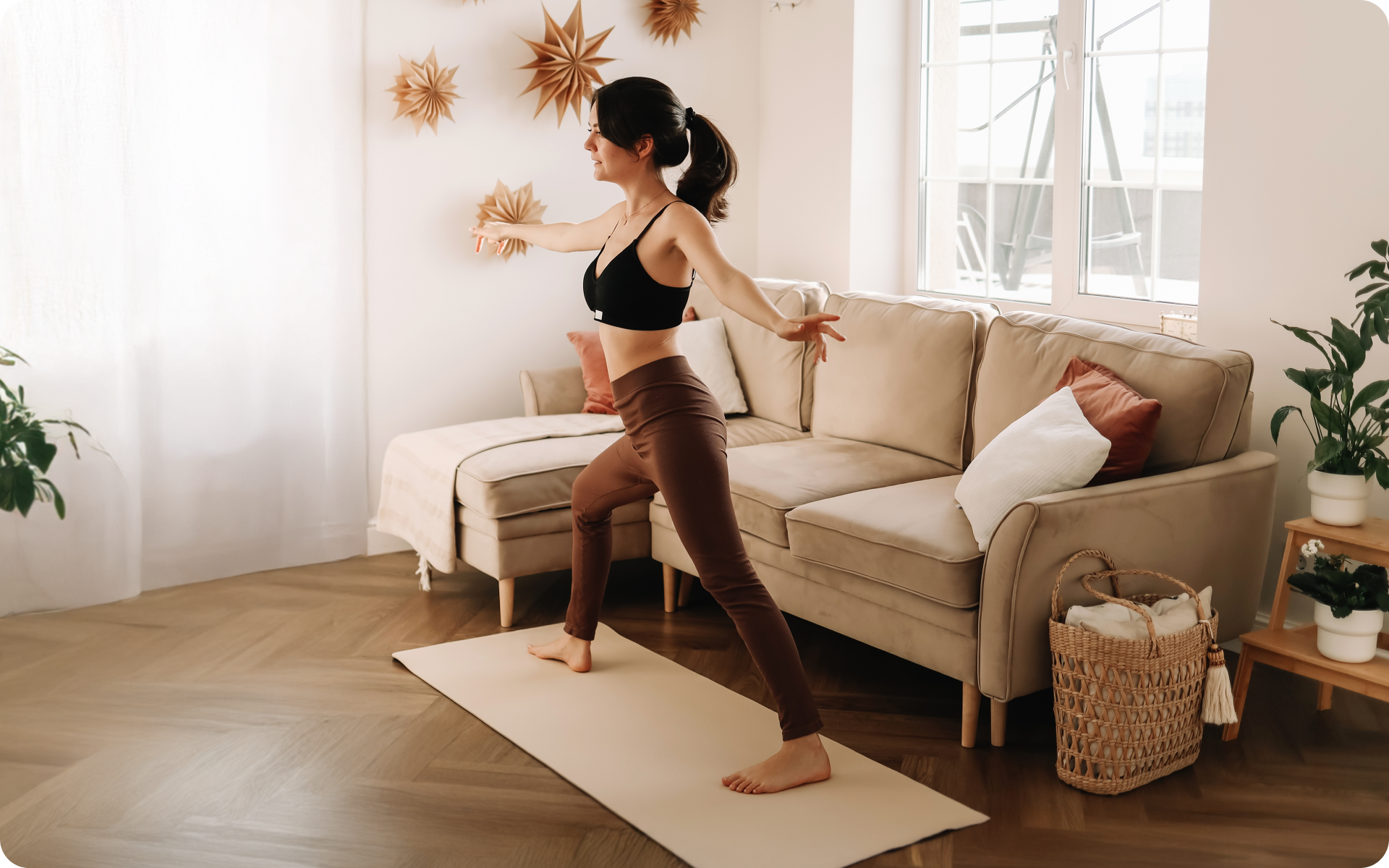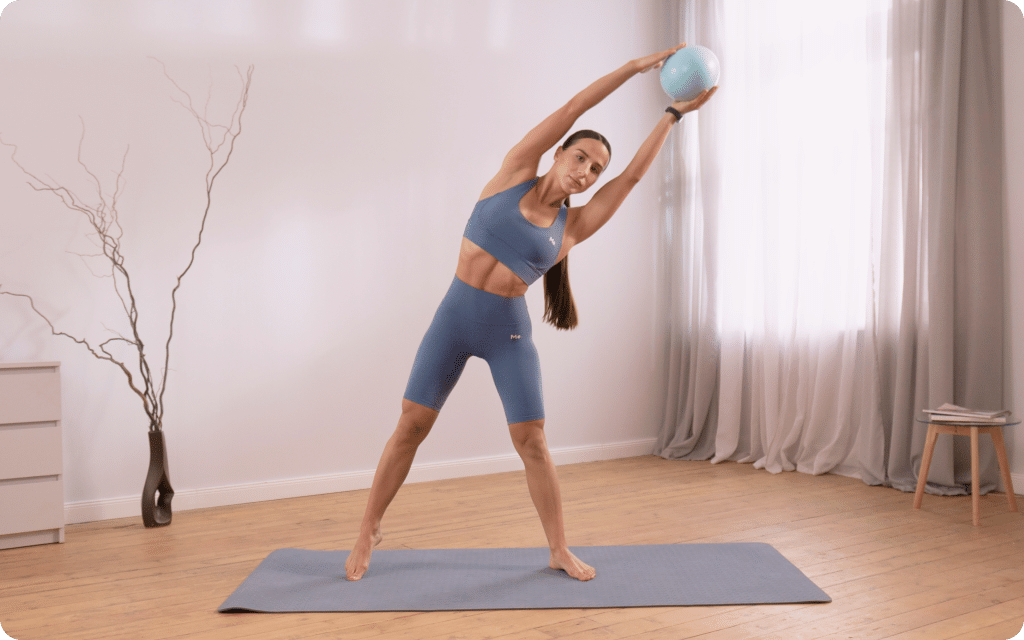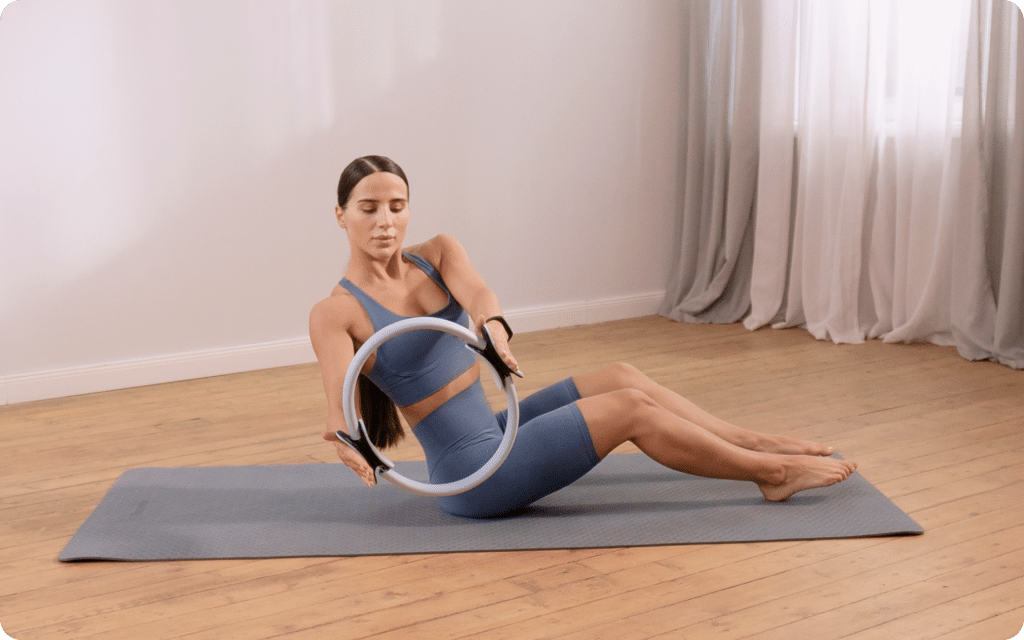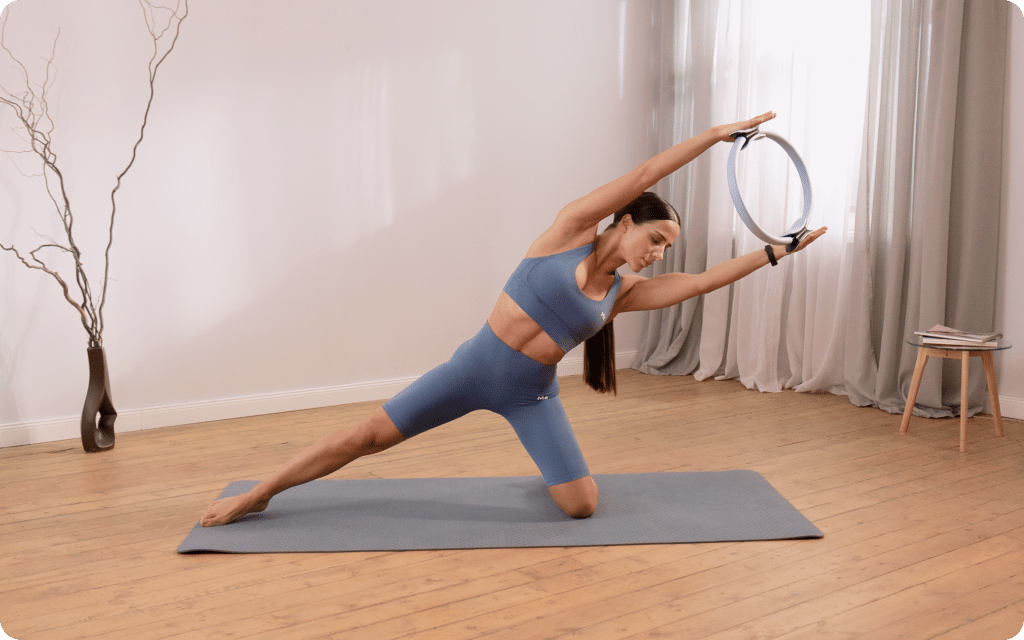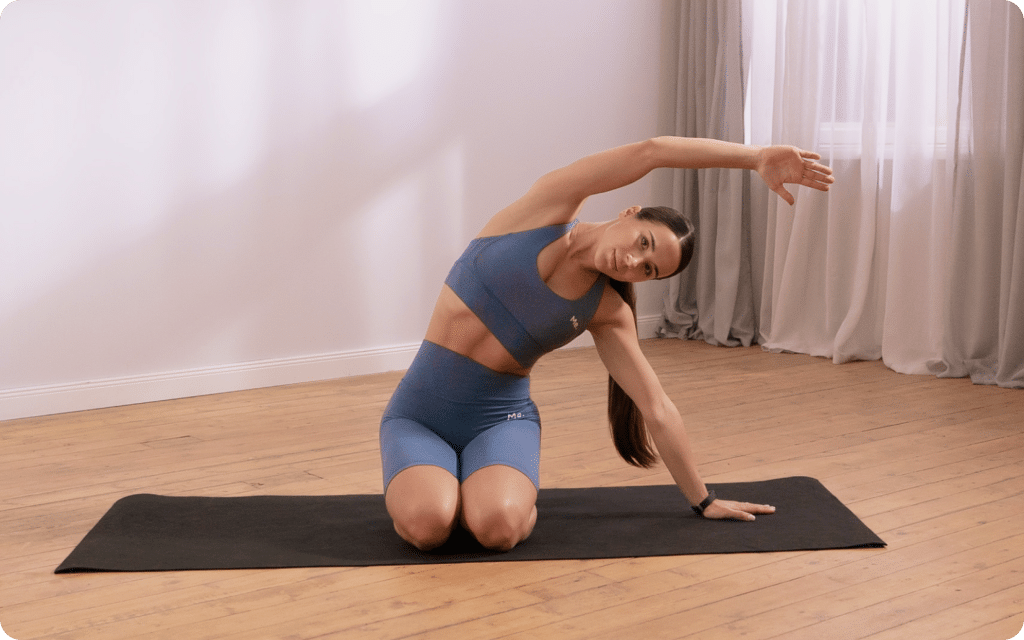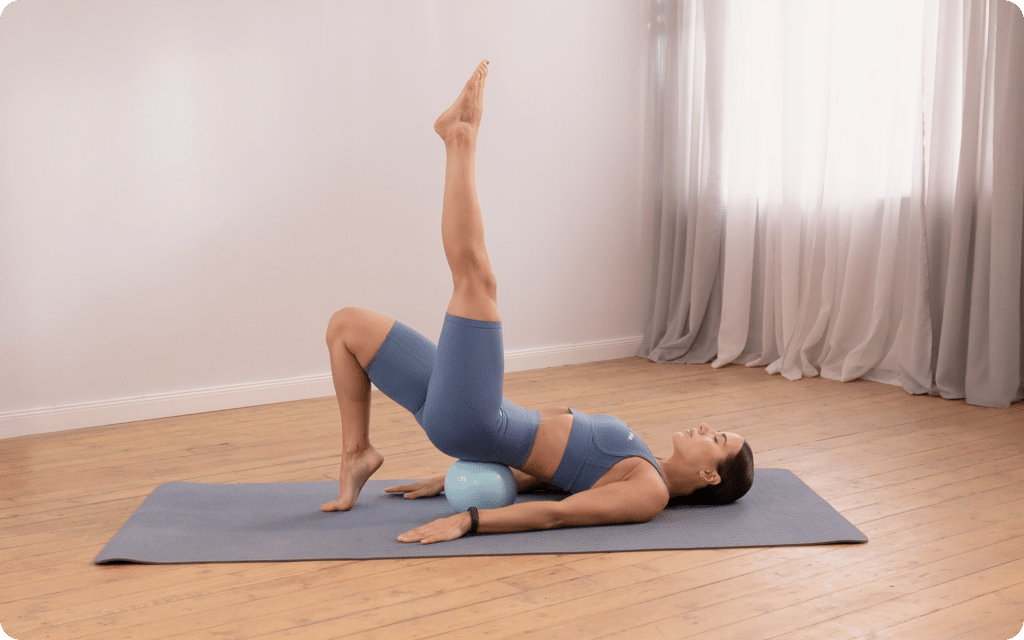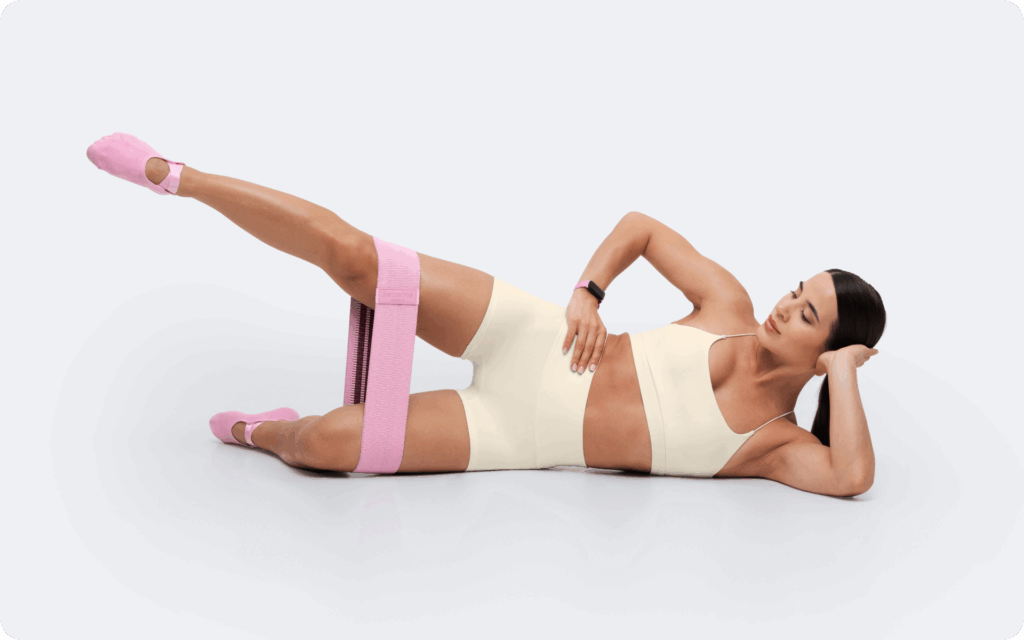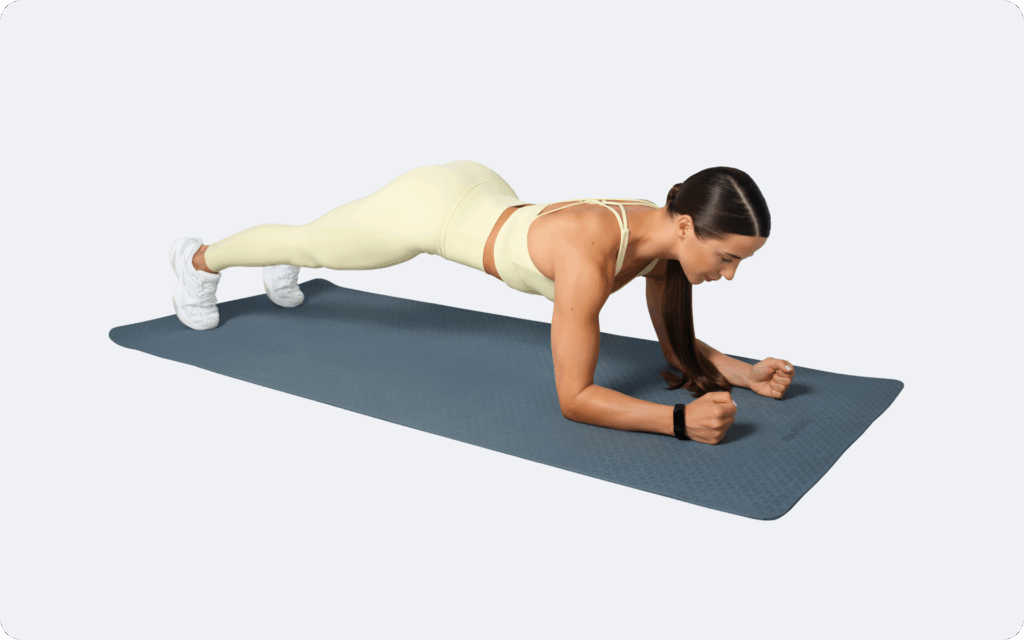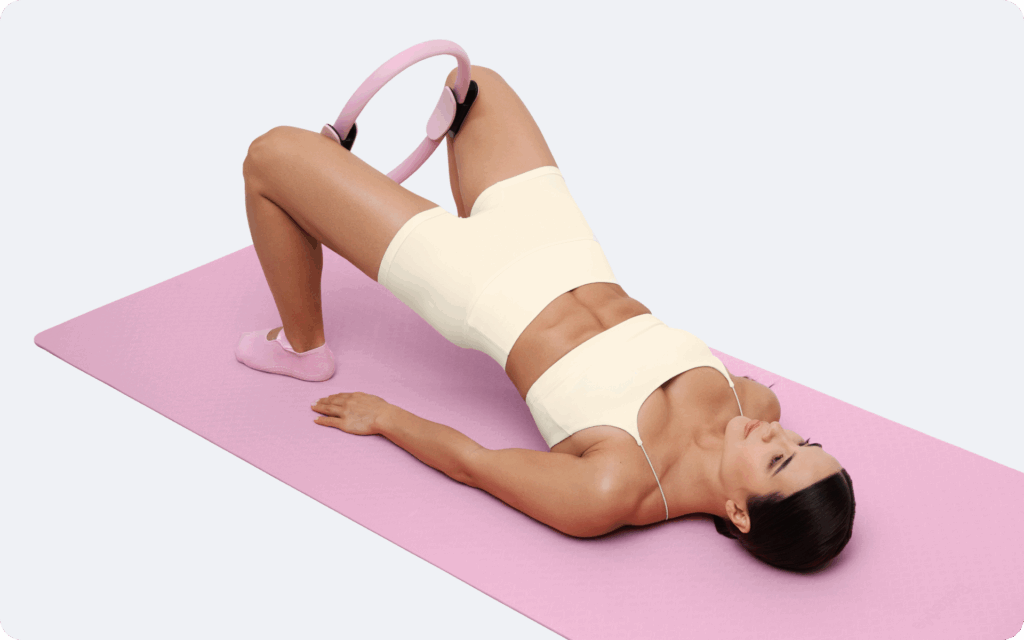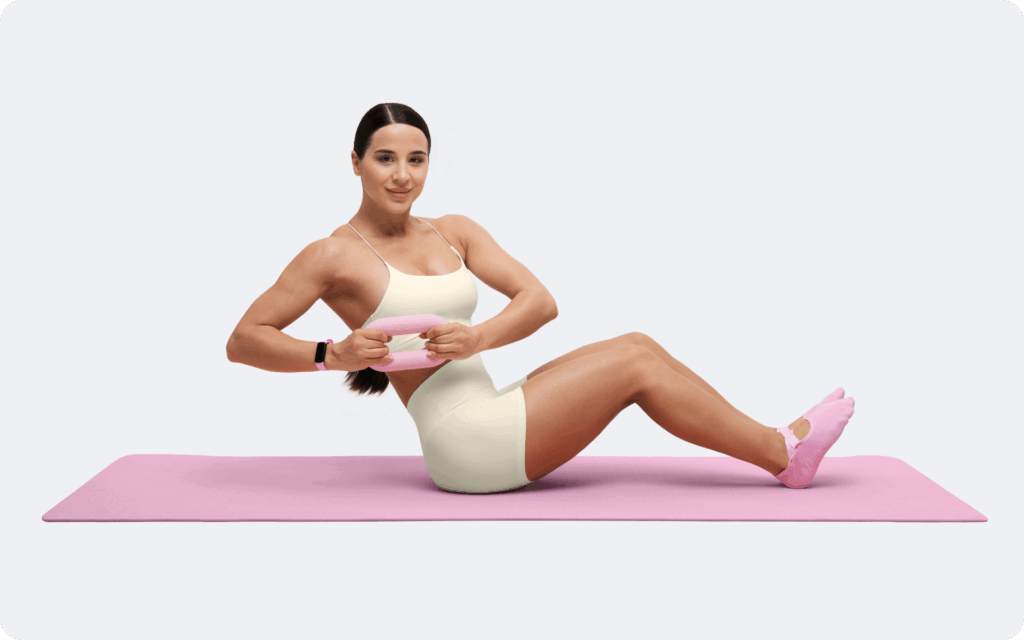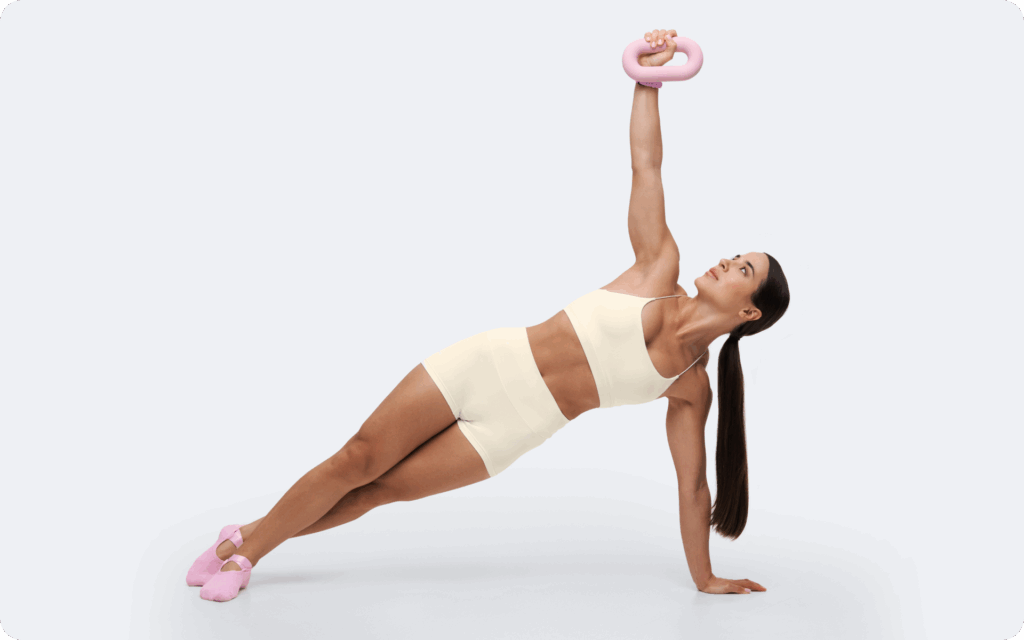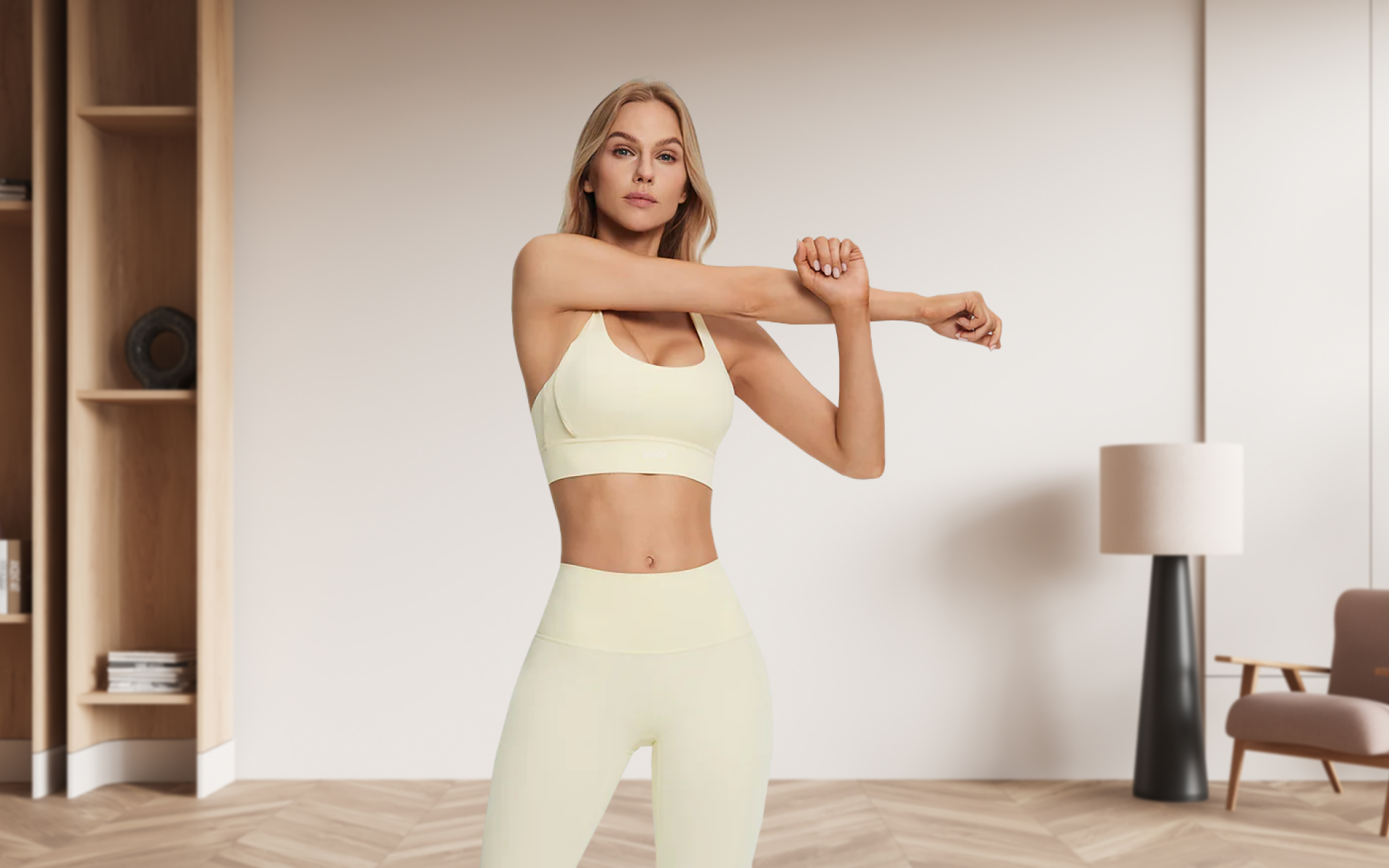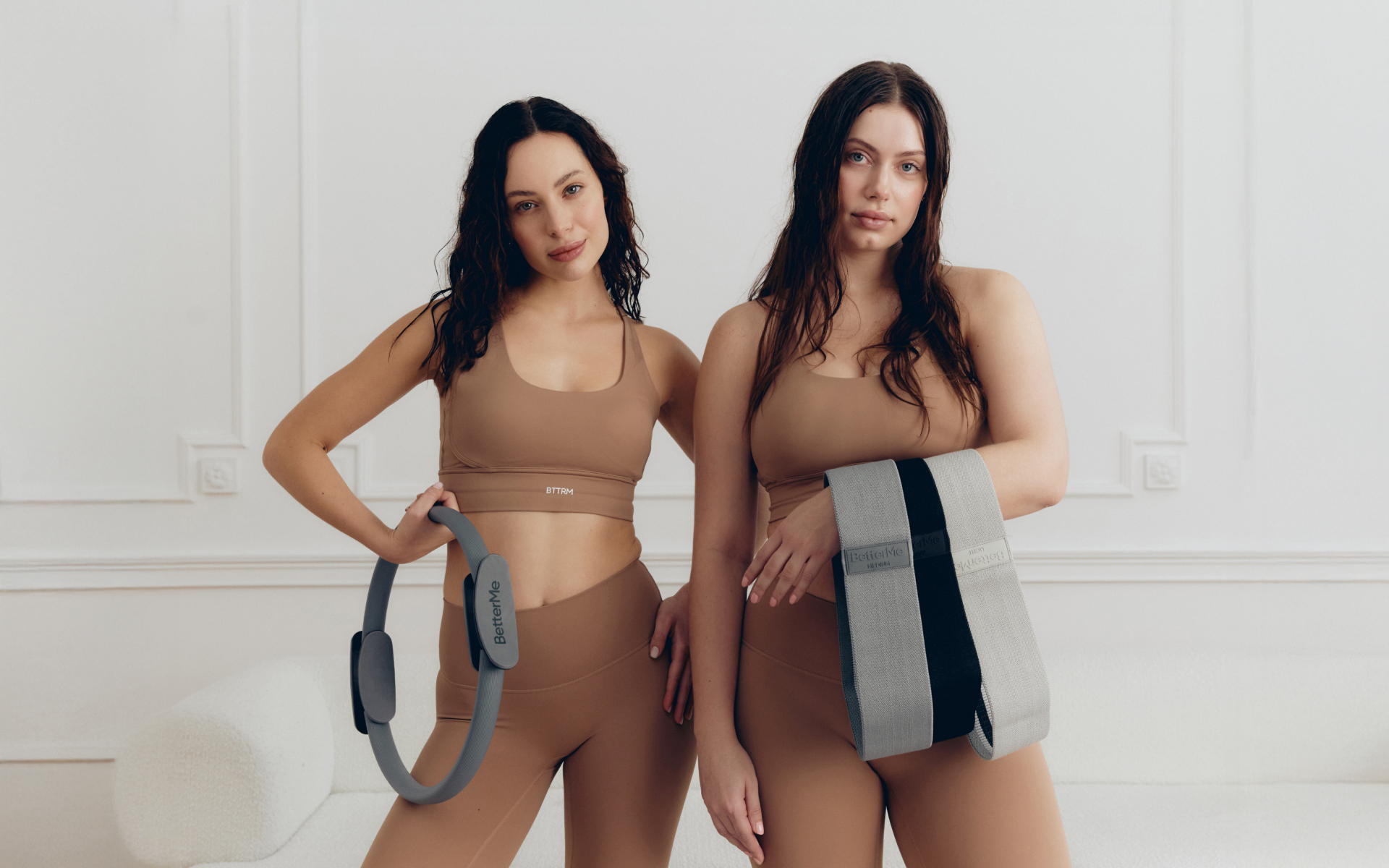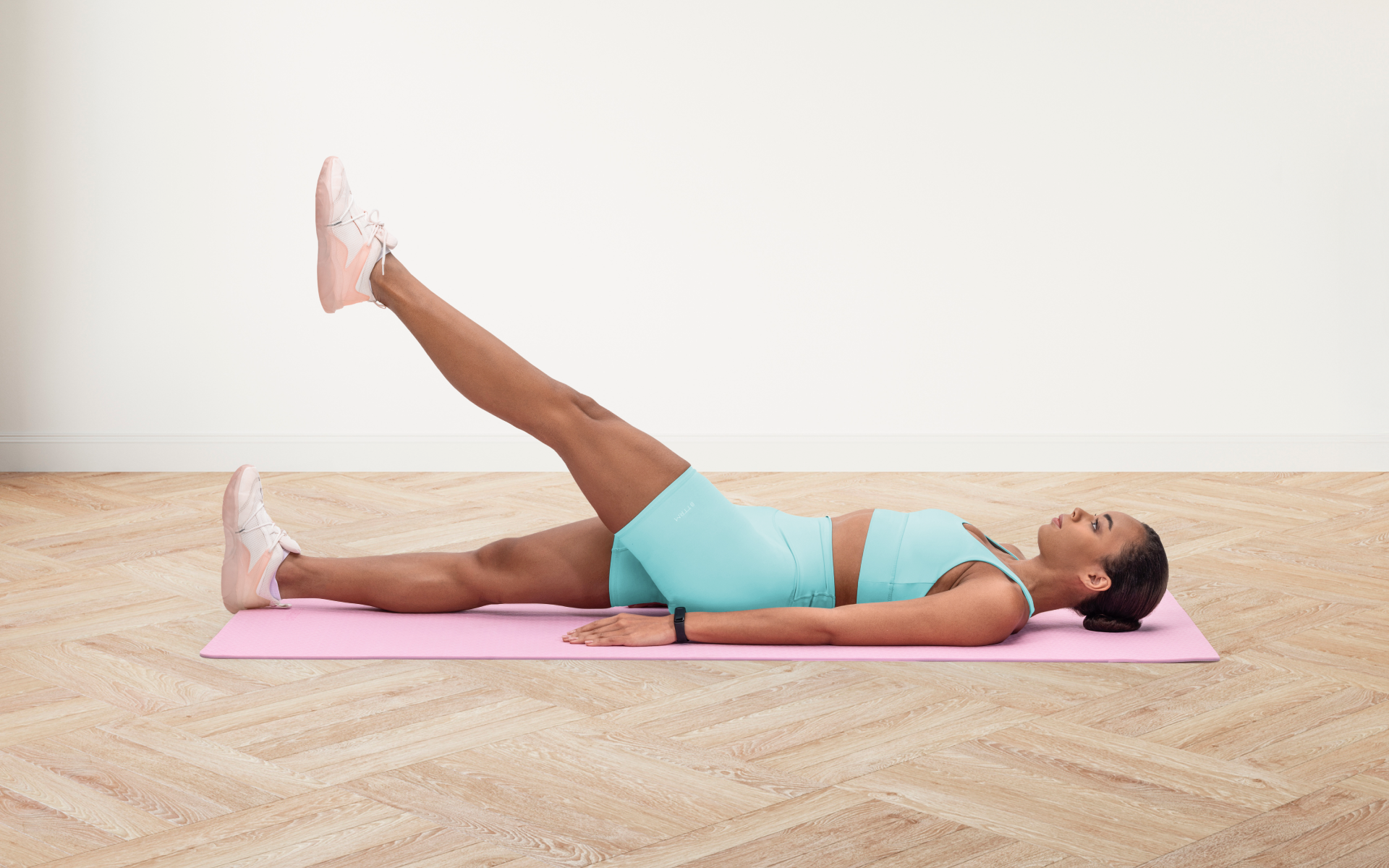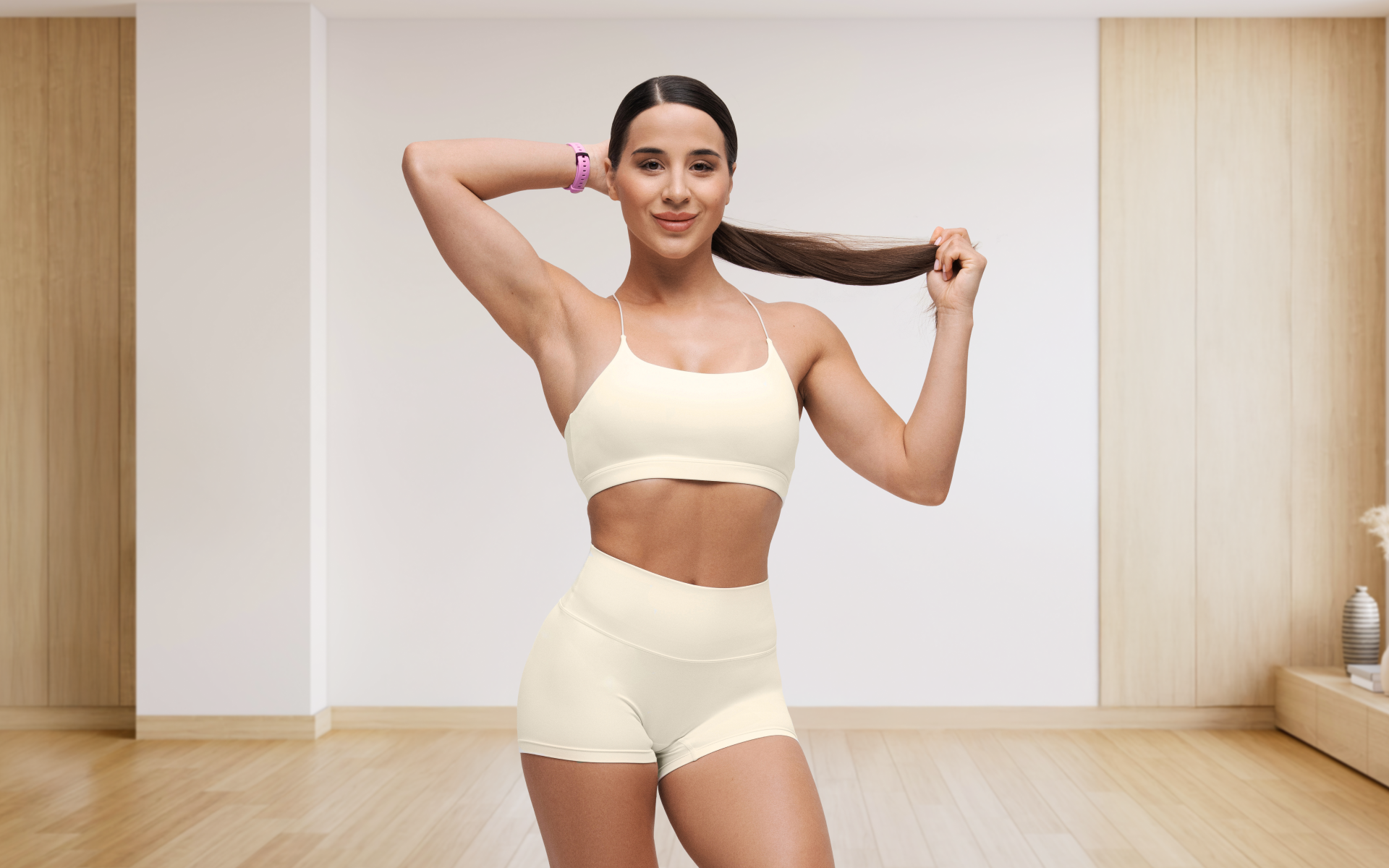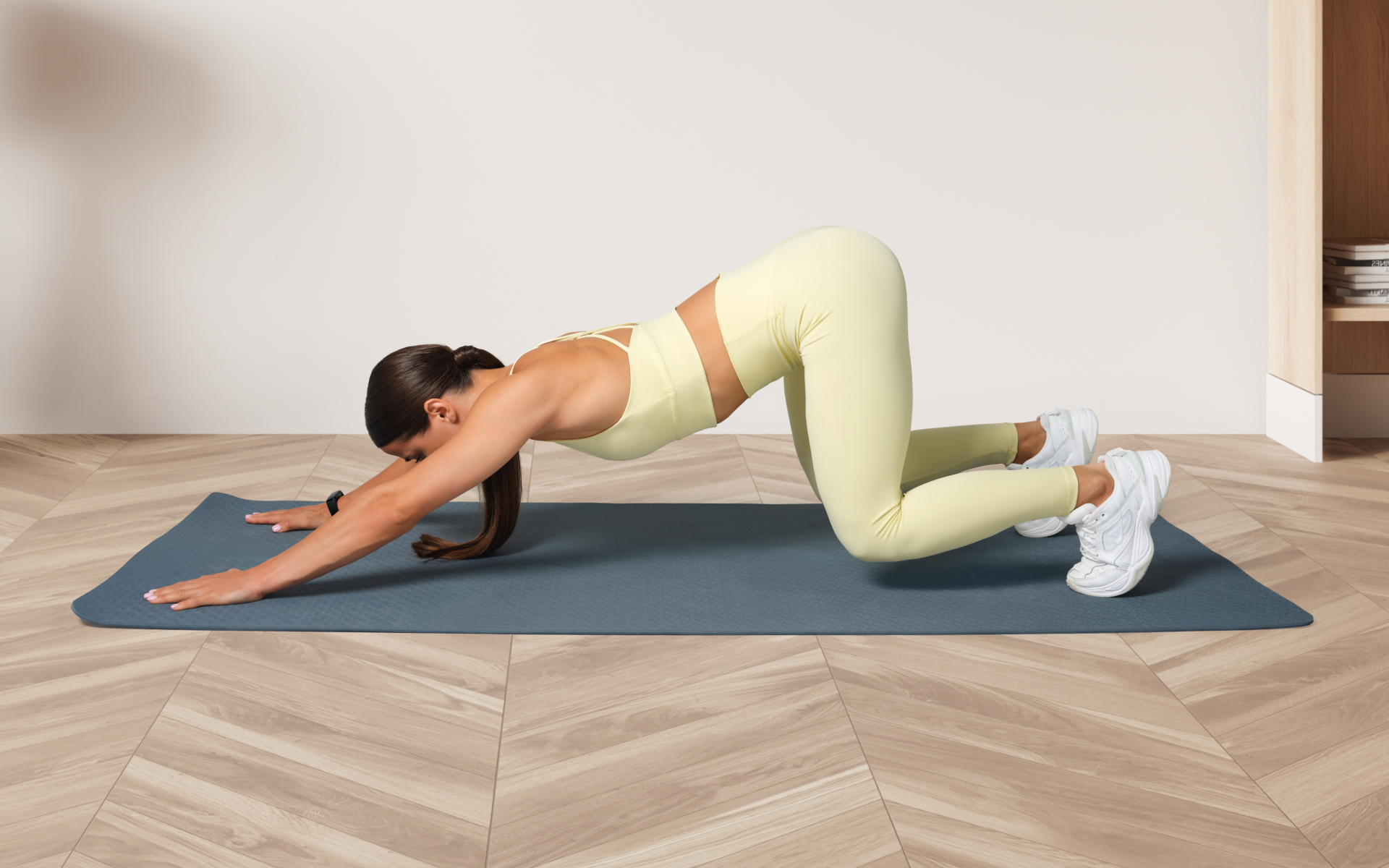Pilates has become a go-to workout for people of all fitness levels.
It strengthens muscles, improves flexibility, and boosts overall mind-body awareness.
Pilates focuses on controlled movements and precise techniques at its core, making it a staple for those seeking gentler, yet highly effective, exercise.
If you’re a Pilates enthusiast, you’ve probably wondered whether practicing at home can measure up to the experience of a studio class. The convenience of rolling out your mat in your living room is undeniable, but are you getting the same benefits?
Like most things in fitness, the answer isn’t black and white.
Both options have unique advantages, and the best choice often depends on your goals, resources, and preferences.
In this article, we’ll explore the nuances of practicing Pilates at home versus in a class, weighing the pros and cons of each approach to help you make an informed decision.
Can I Do Pilates On My Own At Home?
Yes, you can practice Pilates at home on your own.
Pilates is one of the most accessible forms of exercise from home because it often requires no more than a mat and some space to move.
However, to make the most of your practice, consider this:
Start With The Basics
If you’re new to Pilates, building a strong foundation is essential.
Pilates has control, concentration, precision, breath work, flow, and centering principles.
Each principle is key to performing the movements safely and effectively:
- Control: Every movement is intentional, avoiding jerky or uncontrolled actions.
- Concentration: Staying mentally present during each exercise to fully engage the muscles.
- Precision: Focusing on proper form rather than speed or repetitions.
- Breath Work: Using specific breathing techniques to enhance movement and core engagement.
- Flow: Creating smooth, continuous transitions between exercises.
- Centering: Activating your core (or “powerhouse”) as the base of all movement.
These aren’t just abstract ideas. They’re practical tools that help you get the most out of your session while reducing the risk of injury.
Reasons why BetterMe is a safe bet: a wide range of calorie-blasting workouts, finger-licking recipes, 24/7 support, challenges that’ll keep you on your best game, and that just scratches the surface! Start using our app and watch the magic happen.
Follow A Program Or Instructor
Following a structured program or taking advantage of online classes is best if you’re going solo at home. Certified Pilates instructors can guide you through sequences, ensuring proper technique.
Many platforms now provide affordable or free resources for all skill levels, giving you access to expert guidance right in your living room.
Equip Yourself Properly
At its most basic, all you need is a mat. However, as you progress, adding props like resistance bands, a Pilates ring, or small weights can deepen your workouts and help you hit new challenges.
You could integrate it into your practice by accessing more advanced Pilates equipment for home workouts, like a reformer (a machine designed for a full-body workout using springs for resistance). However, the mat-based version is more practical for most people at home.
The BetterMe Mini Reformer is an excellent option for those looking to add some resistance and variety to their mat Pilates workouts. It’s compact, easy to use, and allows various exercises targeting different muscle groups.
Things To Watch Out For
Without an instructor physically present, it’s easy to develop poor habits.
Incorrect alignment or body mechanics can lead to discomfort or even injury over time.
It’s worth checking your form in the mirror or recording yourself occasionally to ensure you’re doing the exercises correctly.
Some complex exercises may also be better suited for a guided, in-person class at first.
Focus on mastering beginner and intermediate movements before tackling advanced variations independently.
Read more: Is Pilates Good for Posture?
Is Pilates At Home Effective?
When done correctly, Pilates can be very effective.
The benefits of pilates at home are similar to the improvements you’d see in a studio setting, primarily when you focus on proper technique and consistency.
It Improves Core Strength Just Like Studio Pilates
One of Pilates’ main goals is to strengthen your core muscles, including the deep stabilizers like the transverse abdominis (1). Whether at home or in a studio, the moves target these muscles to improve your posture, balance, and overall strength.
The key lies in following the foundational principles of Pilates, like precision and control, which are just as achievable at home with guided tutorials or well-practiced routines.
You Can Enhance Flexibility And Mobility
Pilates exercises at home can boost your flexibility and range of motion just as well as a class setting (2). Many exercises, like the spine stretch or hamstring roll-downs, focus on elongating and mobilizing muscles.
While a trained instructor may help fine-tune your technique in a studio, you can see significant gains if you stay mindful of your form and adhere to safe progressions.
It May Have Slightly Less External Motivation Than A Class Setting
One area where at-home practice differs is the atmosphere.
Studios provide an instructor’s watchful eye and the energy of a collective group, which can keep you motivated. You’ll need to rely more on self-discipline to stay consistent at home. For some, the ability to pause when needed and work at their own pace might even feel like a bonus.
It Can Be More Accessible, Leading To Better Consistency
One of the most significant advantages of at-home Pilates is convenience.
You can roll out your mat anytime, whether it’s a quick session before bed or a longer routine on the weekend.
This accessibility can reduce barriers like travel time or class schedules, which often derail consistency. Regular practice is critical for seeing progress, so having Pilates “on demand” at home might lead to better outcomes for some people.
It Saves Time And Money
Practicing at home can be more budget-friendly. You won’t need to pay for memberships or commute time. Plus, there are countless free or affordable online resources to guide you. These advantages make Pilates accessible to those who may not have a high-end studio nearby. Over time, the savings can make at-home practice a convenient option.
Try this pilates without equipment routine and learn simple moves you can try anytime, anywhere.
You Have The Freedom To Personalize Your Practice
You can tailor your sessions at home to suit your goals, preferences, or mood.
Want a shorter practice focused on breathing? You’ve got it.
Do you want to add props for a challenge? Doable.
This level of autonomy is harder to achieve in a studio, where classes typically follow a set structure.
It May Lack Immediate Feedback From An Instructor
While at-home Pilates is effective, one potential drawback is the lack of hands-on corrections. Misalignment or poor body mechanics may go unnoticed, affecting the effectiveness and safety.
Try recording your sessions occasionally or checking your form using a mirror to counteract this. Consider taking a few in-studio classes to sharpen your technique before transitioning to at-home practice.
Can You Lose Weight With At Home Pilates?
Pilates can be part of a greater weight management program.
On average, you can expect to burn between 115 and 150 calories per hour with mat Pilates (3), depending on factors like your weight, fitness level, and the intensity of the routine.
This energy expenditure is comparable to a brisk walk but much less than high-intensity cardio.
In many ways, Pilates supports long-term, sustainable weight management:
- Improved Consistency: At-home Pilates removes barriers like commuting to a studio or sticking to a rigid class schedule. This convenience makes it easier to stay consistent, which is crucial for seeing results over time.
- Better Posture and Movement Efficiency: Strengthening your core and stabilizing muscles translates to better movement mechanics (4).
The improved mobility is beneficial during other forms of exercise, allowing you to perform them with reduced strain and higher calorie burn.
- Mindfulness and Stress Reduction: Pilates focuses on controlled breathing and mindful movement (5). These relaxation factors can reduce stress and improve sleep quality, which are surprisingly significant in managing weight (6, 7).
Whether you’re a workout beast or just a beginner making your first foray into the world of fitness and dieting – BetterMe has a lot to offer to both newbies and experts! Install the app and experience the versatility first-hand!
Why Pilates Alone May Not Be Enough
Although Pilates builds muscle and improves overall physical health, it may not be the sole solution for those aiming to quickly burn large amounts of calories.
Here’s why:
- It’s Anaerobic: Pilates is primarily a form of anaerobic exercise (8), focusing on strength, flexibility, and mobility rather than sustained cardiovascular effort.
Anaerobic exercises are excellent for building muscle (9) but don’t burn as many calories as aerobic activities like running or cycling.
- Weight Loss Requires a Caloric Deficit: To lose weight effectively, you must burn more calories than you consume (10). Incorporating a healthy diet alongside Pilates is key (11). Activities like walking or jogging on off-days can complement your Pilates practice, helping you create that necessary deficit.
Read more: The Benefits Of Pilates Once A Week: Strength, Flexibility & More
What Is An Effective Pilates At Home Workout?
The best at home Pilates workout plan utilizes movements on the mat to effectively target your core, enhance flexibility, and engage muscles throughout your entire body.
Below is a simple yet powerful full-body routine you can try at home.
It’s ideal for all fitness levels, and you can easily modify the exercises to suit your ability.
Your Full-Body Mat Pilates Routine
1. The Hundred (Core Activation)
- Lie on your back with your legs lifted, bent at a 90-degree angle (tabletop) or extended at 45 degrees for more challenge.
- Lift your head, neck, and shoulder blades off the mat. Reach your arms forward, hovering above the floor.
- Pump your arms up and down rapidly while inhaling for 5 counts and exhaling for 5.
- Continue for 10 breaths (100 arm pumps).
2. Roll-Up (Spinal Flexibility and Core)
- Start lying on your back with your legs extended and arms reaching overhead.
- Slowly curl your body up one vertebra at a time, reaching for your toes.
- Reverse the movement to roll back down, keeping control and engaging your core the entire time.
- Repeat 8–10 times.
3. Single Leg Stretch (Core and Stability)
- Lie on your back with your head and shoulders lifted, and bring one knee to your chest. Extend your other leg out straight at a 45-degree angle.
- Switch legs, straightening the bent knee while pulling in the opposite leg.
- Continue alternating for 10–12 reps per side, ensuring your lower back stays connected to the mat.
4. Swimming (Back, Glutes, and Shoulders)
- Lie on your stomach with your arms and legs extended.
- Lift your arms, chest, and legs slightly off the ground.
- Flutter your opposite arm and leg up and down simultaneously, like you’re swimming.
- Continue for 20–30 seconds, focusing on controlled, small movements.
5. Side-Lying Leg Lifts (Hips and Glutes)
- Lie on one side with your head supported by your hand, legs stacked and straight.
- Lift your top leg to hip height, then lower it slowly with control.
- Repeat 10–12 times on each side.
6. Plank (Full-Body Strength)
- Begin on your hands and toes, with your body in a straight line from head to heels.
- Engage your core and avoid letting your lower back sag.
- Hold for 20–60 seconds, depending on your ability.
7. Spine Stretch Forward (Spinal Mobility and Hamstrings)
- Sit tall with your legs extended out in front of you, feet flexed.
- Reach your arms forward and slowly fold over your legs, reaching for your toes.
- Focus on lengthening your spine as you stretch forward.
- Hold for 10 seconds, then return to your starting position. Repeat 5–6 times.
8. Bridge (Glutes and Hamstrings)
- Lie on your back with your knees bent and feet hip-width apart, flat on the mat.
- Lift your hips toward the ceiling, squeezing your glutes and hamstrings.
- Lower back down slowly with control.
- Repeat 10–12 times.
Tips For Success
- Move with intention and control. Each exercise should feel precise and focused.
- Use your breath strategically; inhale to prepare and exhale during the effort phase of the movement.
- If any exercise feels too challenging, adjust the range of motion or reduce reps.
Should I Do Pilates In The Morning Or At Night?
The timing of your Pilates practice largely depends on your personal goals, preferences, and daily schedule. Both morning and evening sessions have unique advantages, so it comes down to what aligns best with your needs.
Morning Pilates: Energize And Focus
Practicing first thing in the morning can be an incredible mood and energy booster.
Pilates wakes your muscles, gets your blood flowing, and prepares your body and mind for the day ahead. It’s also a great way to establish consistency since mornings often have fewer interruptions than later hours.
Benefits of morning sessions:
- Boosted Energy: Pilates gets your circulation moving and leaves you feeling invigorated (12).
- Enhanced Focus: Starting your day with mindful movement can improve concentration and productivity (13).
- Consistency: It’s easier to make Pilates a habit when it’s the first thing you check off your list.
A quick tip? Fuel your body with water or a light snack before starting, especially if you do not like exercising on an empty stomach.
Evening Pilates: Relax and Destress
If unwinding after a long day is your goal, evening Pilates might be a better fit.
It can help relax tense muscles, calm your mind, and prepare you for restful sleep.
Many people find this time ideal for self-care, as it feels refreshing to close the day.
Benefits of evening sessions:
- Stress Relief: Pilates promotes deep breathing and mindful movement, which can help melt away the day’s worries (12).
- Improved Recovery: Evening workouts may be gentler on your body as muscle stiffness from the day gets worked through (14).
- Better Sleep: Relaxation-focused routines can trigger your body to wind down, promoting a good night’s sleep (9, 14).
If you choose nighttime, avoid overly intense routines that may leave you too energized to relax. Opt instead for slow, stretching-focused sessions.
How To Choose The Right Time
Here are a few practical tips to help decide the best time for your Pilates practice:
- Listen to Your Body: Some people naturally feel more energetic in the morning, while others hit their stride in the evening. Go with what feels best.
- Consider Your Schedule: Choose a time you can stick to consistently.
Mornings work best for busy weekdays, while evenings fit better on quieter days.
- Align With Your Goals: Want to energize and sharpen your focus?
Try mornings.
Looking to relax and destress? Go for evenings.
How Many Times A Week Should You Do At Home Pilates?
If you’re new to Pilates, 2-3 weekly sessions are a great starting point.
This consistency helps you get familiar with the movements and build foundational strength without overdoing it. Keep your sessions between 20–45 minutes to prevent muscle fatigue while allowing your body to adapt.
For those comfortable with Pilates, you can do more sessions a week.
At this stage, your muscles and joints are more conditioned, and you can handle longer or more challenging routines. Try mixing up your focus areas—for example, alternate between core-intensive sessions one day and flexibility or mobility-focused routines the next.
Consider your overall routine when making your home Pilates workout plan.
Suppose you’re also incorporating other forms of exercise, such as weight training or cardio, schedule rest days, and consider how your body will feel after each workout.
For example, if you have a challenging leg day at the gym, focus on upper body work during your Pilates session the next day.
Looking for a place to start? This pilates at home challenge introduces accessible exercises to support your fitness goals conveniently.
A 10-minute Pilates session won’t lead to dramatic changes but can offer small, valuable benefits. It allows you to activate your core muscles, enhance posture awareness, and improve circulation. While it’s a short session, consistency is key—regularly incorporating even brief workouts can build strength, improve flexibility, and lead to noticeable results over time. Little steps done often can make a big difference. Pilates can be self-taught using online classes, apps, or instructional videos. However, beginners may benefit from professional guidance to ensure proper form and avoid injury. Both options have benefits. At-home Pilates offers convenience and flexibility, while gym or studio classes provide access to equipment and professional feedback, which can be especially helpful for beginners. You can do Pilates daily, as it’s low-impact and gentle on joints. Alternate between intense sessions and lighter, recovery-focused routines to avoid overworking muscles. If you’re doing other forms of exercise, listening to your body and taking rest days as needed is essential.Frequently Asked Questions
What does 10 minutes of Pilates do?
Can Pilates be self-taught?
Is it better to do Pilates at home or at the gym?
Can I do Pilates at home every day?
The Bottom Line
Practicing Pilates at home is doable, especially if you’re consistent and mindful of technique. While it may lack instant feedback, its flexibility, accessibility, and personalization make it an excellent choice for building strength, flexibility, and wellness from home.
However, if you’re a beginner or unsure about specific movements, starting with a few in-studio classes can help you build confidence and avoid common mistakes.
Think of home practice as your space to refine and sustain your Pilates routine, with a little extra freedom to make it work for your lifestyle.
DISCLAIMER:
This article is intended for general informational purposes only and does not serve to address individual circumstances. It is not a substitute for professional advice or help and should not be relied on for making any kind of decision-making. Any action taken as a direct or indirect result of the information in this article is entirely at your own risk and is your sole responsibility.
BetterMe, its content staff, and its medical advisors accept no responsibility for inaccuracies, errors, misstatements, inconsistencies, or omissions and specifically disclaim any liability, loss or risk, personal, professional or otherwise, which may be incurred as a consequence, directly or indirectly, of the use and/or application of any content.
You should always seek the advice of your physician or other qualified health provider with any questions you may have regarding a medical condition or your specific situation. Never disregard professional medical advice or delay seeking it because of BetterMe content. If you suspect or think you may have a medical emergency, call your doctor.
SOURCES:
- The Relationship of Trunk Muscle Activation and Core Stability: A Biomechanical Analysis of Pilates-Based Stabilization Exercise (2021, mdpi.com)
- Pilates for improvement of muscle endurance, flexibility, balance, and posture (2010, pubmed.ncbi.nlm.nih.gov)
- What is the exercise intensity of Pilates? An analysis of the energy expenditure, blood lactate, and intensity of apparatus and mat Pilates sessions (2021, pubmed.ncbi.nlm.nih.gov)
- The real-world benefits of strengthening your core (2012, health.harvard.edu)
- Pilates, Mindfulness and Somatic Education (2014, pmc.ncbi.nlm.nih.gov)
- Impact of a stress management program on weight loss, mental health and lifestyle in adults with obesity: a randomized controlled trial (2018, pmc.ncbi.nlm.nih.gov)
- The surprising connection between sleep and weight management (2024, uclahealth.org)
- The Effect of Pilates on Quality of Sleep, Aerobic Capacity and Anaerobic Power in Premenopausal Women (2024, pmc.ncbi.nlm.nih.gov)
- EFFECT OF AEROBIC AND ANAEROBIC TRAINING ON DIFFERENT ERGOMETERS IN RAT MUSCLE AND HEART TISSUES (2022, pmc.ncbi.nlm.nih.gov)
- Calorie Deficit: What To Know (2022, health.clevelandclinic.org)
- Optimal Diet Strategies for Weight Loss and Weight Loss Maintenance (2020, jomes.org)
- Pilates – health benefits (2022, betterhealth.vic.gov.au)
- Cognitive Benefits of Exercise: Is There a Time-of-Day Effect? (2022, mdpi.com)
- Does exercising at night affect sleep? (2024, health.harvard.edu)
